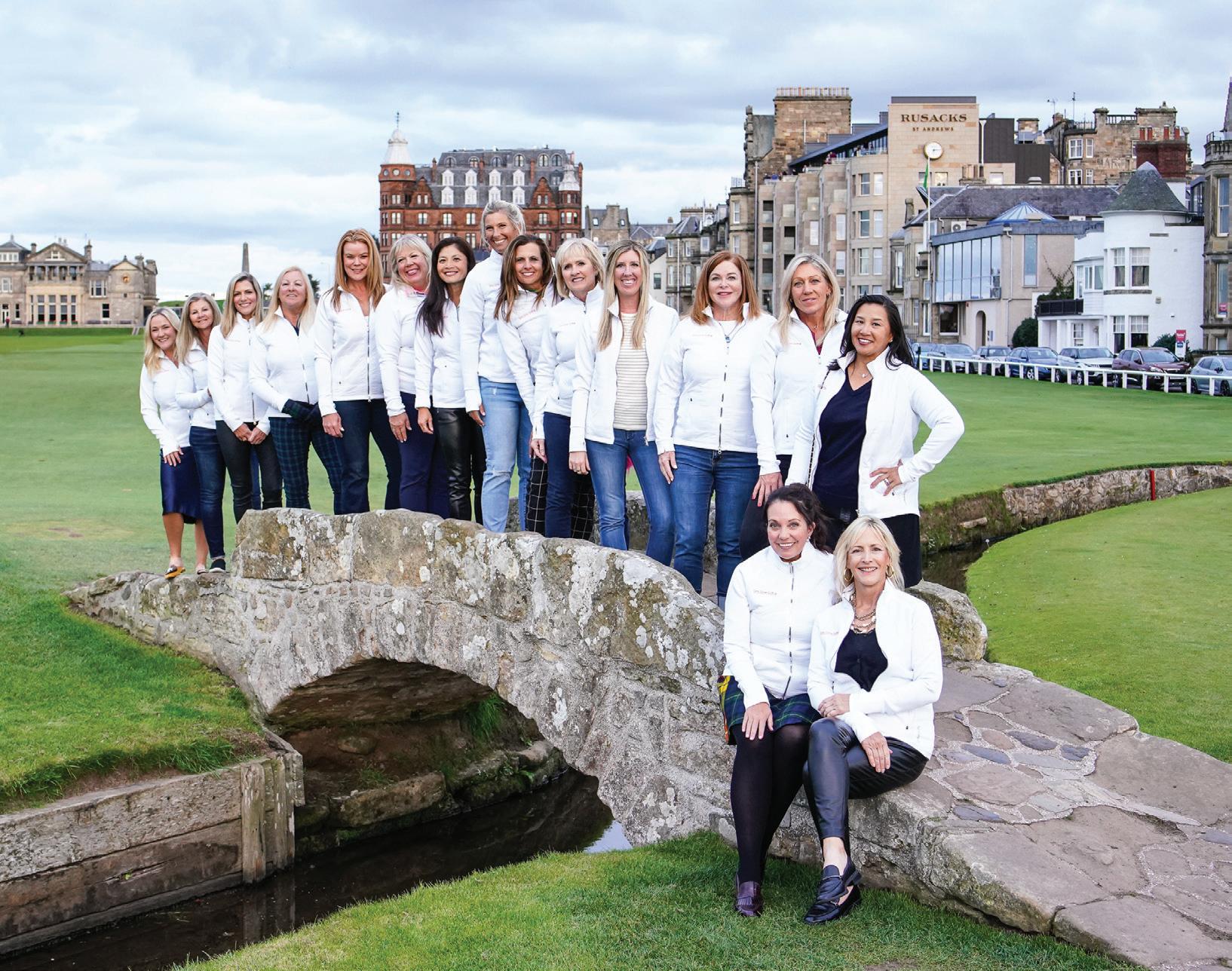
4 minute read
My Pet Peeve in Golf: ‘ARCHI-TORTURE’
Words By Lorraine Thies
We all have our pet peeves, those little annoyances that can drive us crazy, like two kids sitting side-by-side texting instead of talking, or a friend that is a “tapper” – continually tapping a pen or a foot, or a husband who keeps forgetting to put down the toilet seat.
Pet peeves are a part of life. Do you want to know what mine is? Golf course designers who, whether consciously or unconsciously, appear to pay no attention to the female golfer. During the design discussions, they key in on the male golfer and then say “Oops, I need a forward tee… hmmm, let’s just put ‘there’,” choosing a place that is out of the way and that completely changes the character of the hole.
In the mid-90s, when I was fairly new to golf administration, I remember playing a well-known golf course in the Caribbean, one that everyone said was both beautiful and challenging. The first time I played (I was about a 12 handicap at the time), I was completely underwhelmed. Yes, there was some challenge, but to me, there was a lot of sameness to the holes and not much risk reward. Being the only female in the group, I was poupou’d as not knowing a great course if it came up and hit me in the face. We played again the next day. Instead of sitting in the golf cart while the men teed off, I walked up on their tee to ‘see’ what they saw. WOW! What a difference, balls hitting over water, ravines and fabulous doglegs. It was a completely different experience. I even had a few of them get out of their carts on my tee so they could see the difference. The forward tees (known as women’s tees at the time) were placed to the edges of ravines where you only had to hit the ball about 40 yards to maneuver, or you were hitting over a very small section of a water carry or the angle of a sweeping tree-lined dogleg was changed so much that you had a straight, unobstructed shot to a wide landing area.
From that point on, I began noticing course layout and how it presented itself to the female golfer.
In the 90’s I applauded Alice Dye, wife of famous architect Pete Dye. She became very vocal about the fact that golf course design should include more than one set of tees for women. This ended up translating to adding shorter sets of tees– i.e. 4,800 – 5,100 yards, to make golf courses more playable for the higher handicap players.
As architects jumped on the bandwagon, they started adding shorter tees, thinking this would resolve the problem. But again, these new tees appeared to be an afterthought and were often exacerbated by requiring the golfer to hit over a bunker or a tree just to get to their landing area.
Also, we started seeing golf courses whose tee progression would go something like this: 4,800 to 6,000 to 6,500 to 7,000 yards. So now you had a golf course for the higher handicap female (4,800 yards) and for the scratch player (6,000). But the ones that got left behind were the 8 to 15 handicapper who felt that 4,800 yards was too short, but 6,000 yards was too long. is group of women is usually the one who loves the game, is trying to improve, play a lot of golf - whether for pleasure or business, travel to play, and spend a lot of money on lessons, clothing and equipment. It was NOT the group that you wanted to frustrate and alienate.
I get the challenge for architects. As the golf ball goes farther and farther for men, new courses are getting longer and longer. For most women, however, the new clubs & balls don’t provide any appreciable increase in distance. Now they are designing tees from about 5,000 yards to 7,500 yards: that’s a 2,500-yard di erence. Keeping the character of the hole intact from all tees is a challenge but I don’t think it’s impossible. It would be wonderful if architects hired a female (or consulting rm) to take the design for the men and then create a design for women within those parameters – perhaps starting from the green and progressing backward to determine a length for the hole that would give her a challenge but maintain a similar strategy.

Fast forward to today. We have a few women actively involved in golf course design. Two well-known architects, Vicki Martz and Alice Dye, both passed away in 2017 and 2019. Alice’s niece, Cynthia Dye McGarey, continues to carry the torch. Jan Bel Jan started out with Tom Fazio and created her own design company in 2009. A few LPGA players have entered the ring, including Amy Alcott, Jan Stephenson, Nancy Lopez and Annika Sorenstam. ere are also groups that provide consulting services to golf courses on how to make adjustments to be more playable for women.

So what can we do to make sure our experience meets our expectations? Certainly, we can’t change the design, but we can take some proactive ways to minimize the frustration. When I look at a golf course scorecard, I’m always encouraged when I see a progression of tees that are about 500600 yards apart. In those cases, I’m pretty con dent that I will nd a set of tees that’s enjoyable for me.
If that is not the case, the USGA Handicap System provides a way for you to create your own golf course. By choosing a combination of tees, a golf course in the appropriate yardage can be created with a course rating and slope that makes sense.
Pet peeve or not, I nd golf is one of the greatest games that, no matter how good you are, you can enjoy for a lifetime… and I plan to do just that.

19th Hole
The Scotch Library

Scottsdale
6902










